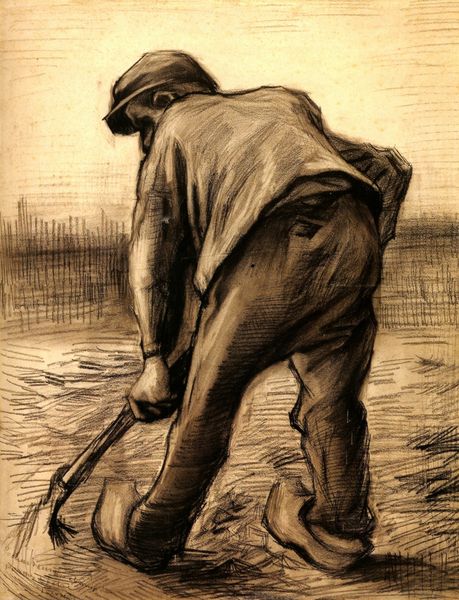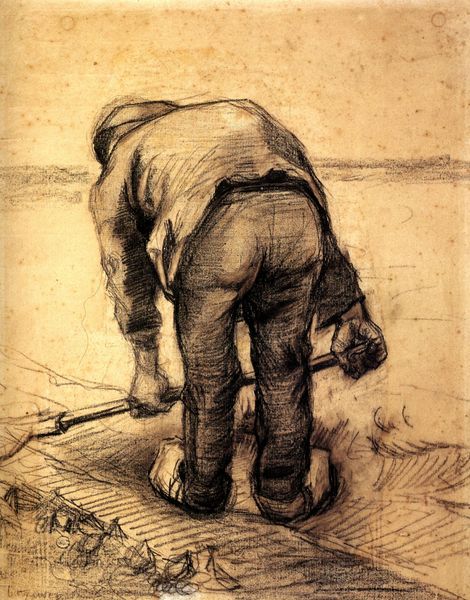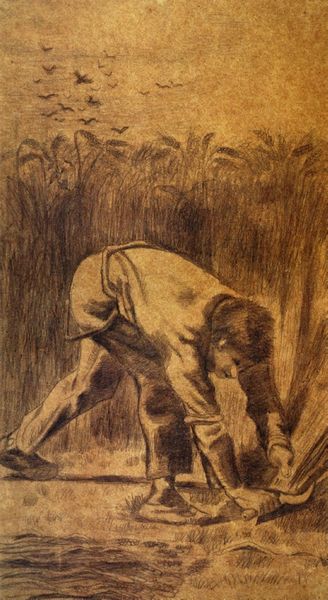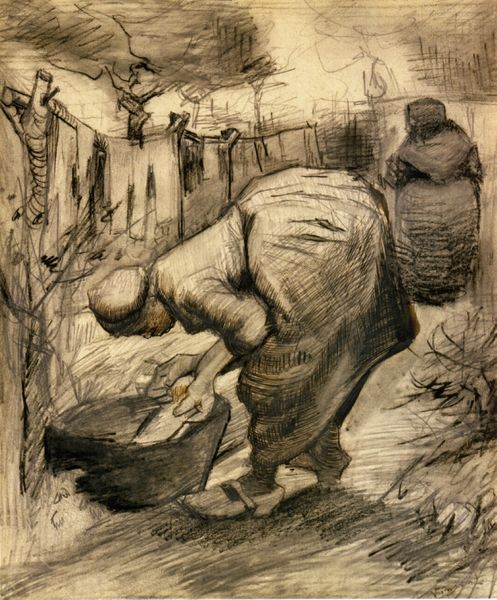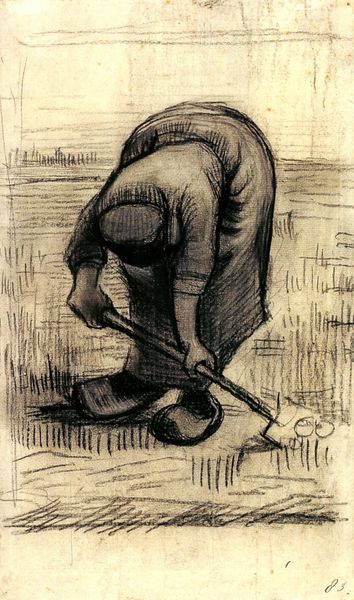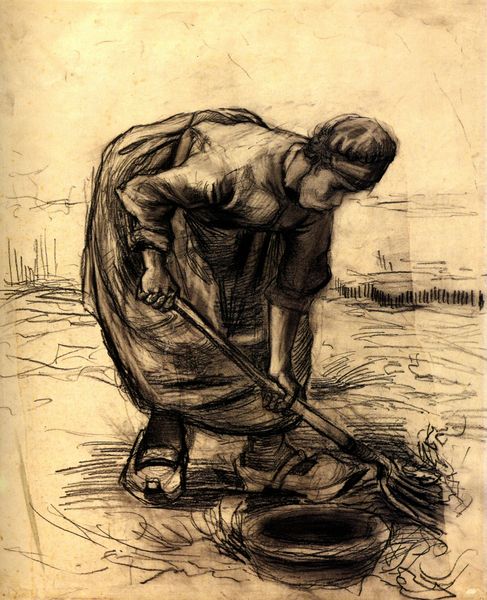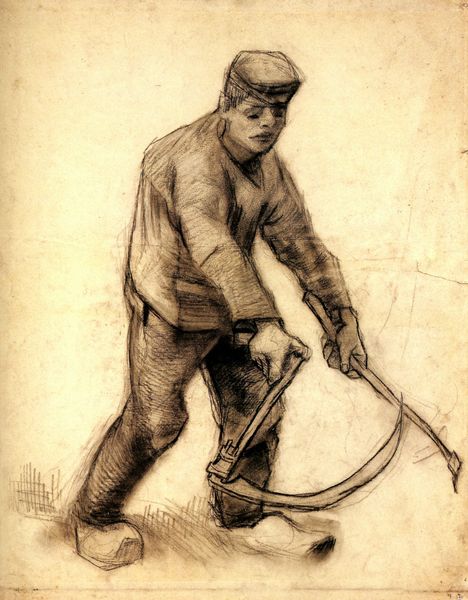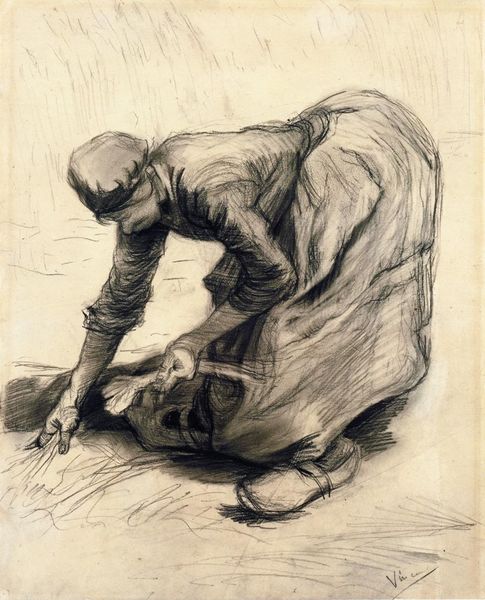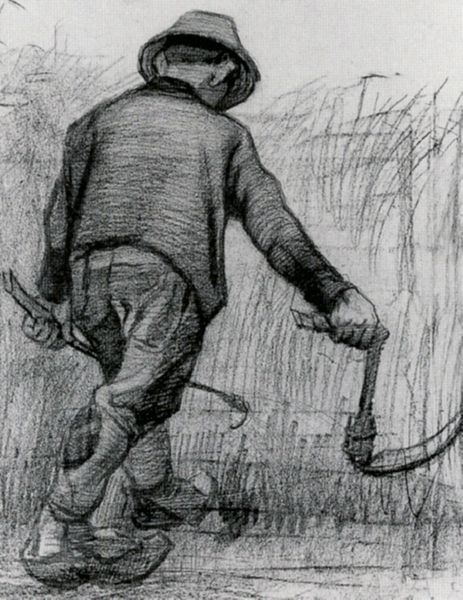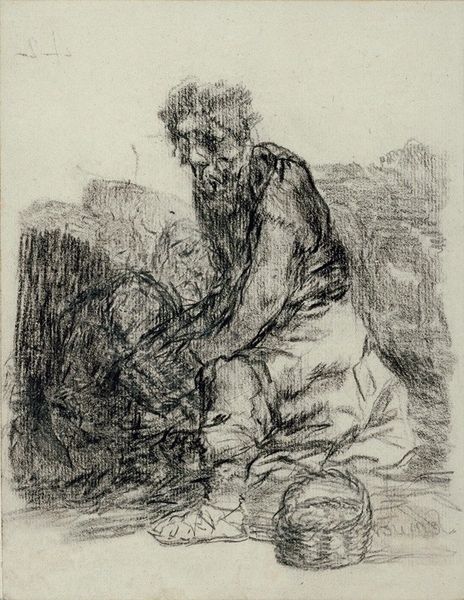
drawing, charcoal
#
portrait
#
drawing
#
pencil sketch
#
landscape
#
charcoal drawing
#
portrait reference
#
charcoal
#
realism
Copyright: Public domain
Editor: This drawing, "Digger" by Vincent van Gogh, created in 1881 with charcoal, possesses a stark, almost somber mood. The figure's posture speaks of hard labor and a connection to the earth. What stands out to me is its raw emotional quality. How do you interpret this work, and what symbols do you see within it? Curator: I see the cyclical nature of existence deeply embedded here. The digger, forever bound to the earth, evokes images of life, death, and renewal—archetypal motifs found across cultures. What does the act of digging itself represent? It's a penetration, an uncovering, a quest for something hidden beneath the surface. Editor: So, the man digging becomes almost a symbol himself, beyond just being a laborer? Curator: Precisely. He embodies persistence, the will to transform the landscape, and by extension, perhaps even himself. Look closely at how Van Gogh uses shadow—is it merely shading or something more? What feelings arise for you from the dark tones juxtaposed with the bare paper? Editor: It adds a feeling of weightiness, the heaviness of work, maybe also hardship. And now that you mention it, the contrast really does make the digger seem to emerge from a dark background. Curator: Van Gogh was deeply interested in portraying the human condition, wasn’t he? What about this simple figure connects with enduring struggles? Does he carry a cultural memory? Editor: That’s powerful to think about. I’m struck now by how a simple image of a digger speaks volumes about the human experience. Thanks, that really reframed how I saw the drawing. Curator: My pleasure. Hopefully we've illuminated some of the enduring symbolism captured here and their implications in the human psyche.
Comments
No comments
Be the first to comment and join the conversation on the ultimate creative platform.
